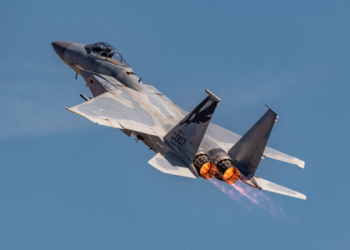Boeing’s credit rating faced renewed pressure this week as S&P Global Ratings lowered its outlook on the aerospace giant, edging it closer to junk status. This move comes in the wake of a mid-air incident in January involving a cabin panel blowout, prompting Boeing to slow production of its popular jet.
The rating agency revised Boeing’s bottom-of-investment-grade rating outlook to “negative” from “stable,” citing concerns over potential delays in the company’s cash flow recovery and credit ratios. Despite affirming Boeing’s “BBB-” long-term and “A-3” short-term issuer credit ratings, S&P highlighted the risk of insufficient free cash flow in 2024 to cover upcoming debt maturities. Additionally, leadership uncertainty looms as CEO Dave Calhoun announced plans to depart by year-end.
Moody’s also downgraded Boeing’s credit rating to just a notch above junk status, coinciding with the company’s report of using $3.93 billion of free cash flow in Q1. Rob Stallard, an analyst at Vertical Research Partners, told Reuters, “This rating change with the negative watch just adds to the long list of pressures that Boeing is grappling with.”
Boeing has faced regulatory scrutiny and reduced production of its 787 widebody and 737 MAX models following the cabin panel incident on an Alaska Airlines flight. Despite these challenges, investors and analysts believe Boeing can address quality and supply-chain issues, ramp up production, and generate the necessary cash flow to avert further downgrades. The company may also consider tapping bond markets to address over $12 billion in debt maturing in 2025 and 2026.
Read more on Domino effect: Alaska Airlines 737 MAX incident leads to Southwest delivery delays




![Boeing 737 max [Photo Credit BusinessInsider]](https://autojournal.africa/wp-content/uploads/2023/08/Boeing-737-max-Photo-Credit-BusinessInsider.jpg)


![An Airbus A320neo takes off for its first test flight [File AP]](https://autojournal.africa/wp-content/uploads/2025/12/An-Airbus-A320neo-takes-off-for-its-first-test-flight-File-AP-350x250.png)
![Germany's auto industry [CNBC]](https://autojournal.africa/wp-content/uploads/2025/11/Germanys-auto-industry-CNBC-350x250.png)
![Foxconn [Source: TechCrunch]](https://autojournal.africa/wp-content/uploads/2025/11/Foxconn-TechCrunch-350x250.png)

![BYD [Source BYD USA]](https://autojournal.africa/wp-content/uploads/2024/04/BYD-Source-BYD-USA-1-75x75.png)








